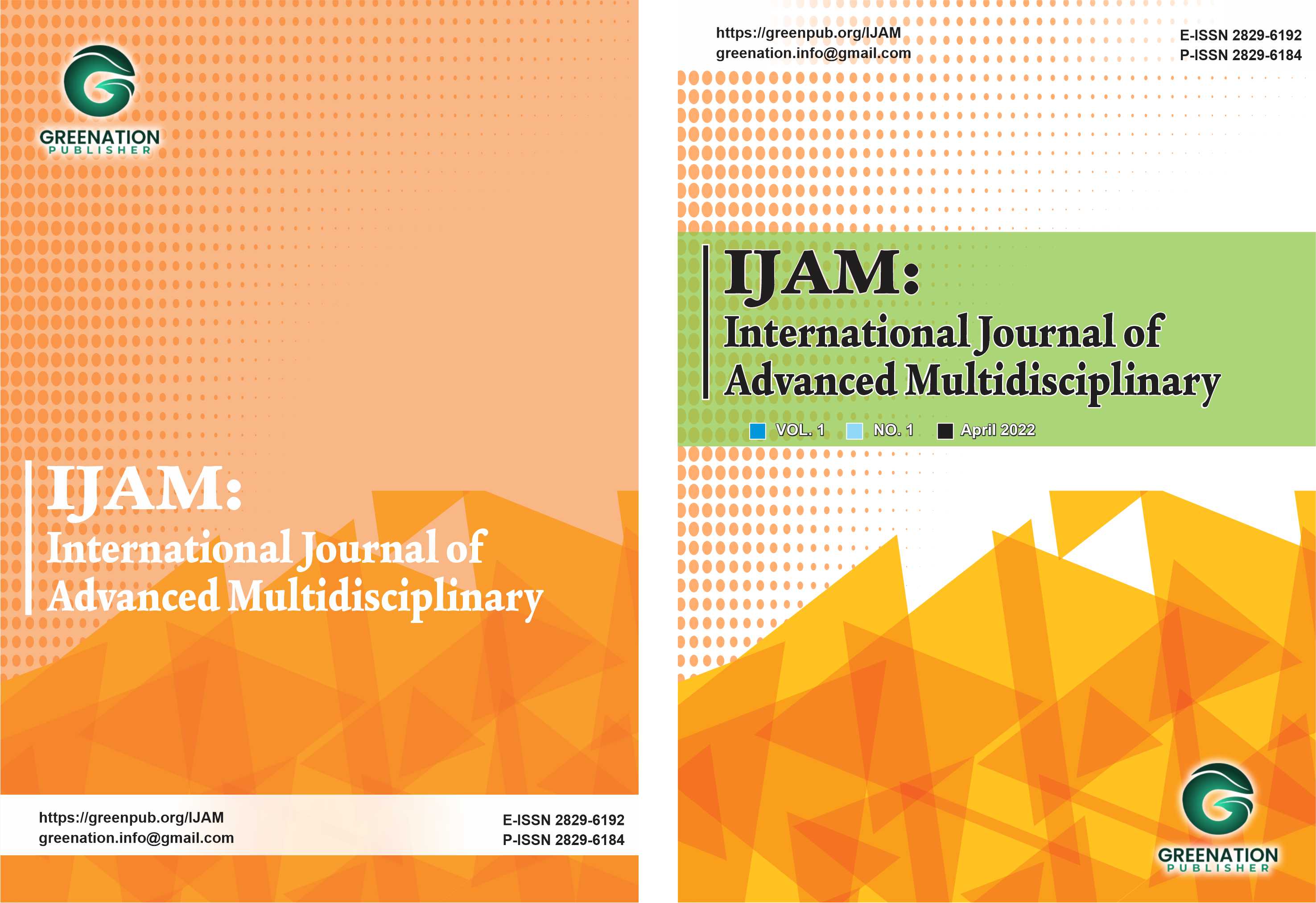Collaborative Leadership: A Solution for High Work Intensity Organizations (A Conceptual Review of Organizational Behavior)
DOI:
https://doi.org/10.38035/ijam.v1i4.649Keywords:
Collaborative Leadership, Job Stress, PerformanceAbstract
Collaborative leadership has become an increasingly relevant approach in modern organizational management, especially in efforts to reduce work-related stress and enhance employee performance. In a high-pressure and complex work environment, this leadership style fosters cooperation, open communication, and active participation from all team members. Through a collaborative approach, leaders can create a more supportive work environment where employees feel heard and valued, thereby minimizing work-related stress. Additionally, by building stronger working relationships and synergy among team members, collaborative leadership has been proven effective in improving both individual and organizational performance overall. This study examines the importance of implementing collaborative leadership as a strategy for managing work-related stress and boosting employee productivity, highlighting various studies and empirical evidence supporting the effectiveness of this approach. The study consists of several parts. First, a literature review focuses on collaborative leadership. Second, the research model and propositions developed in this study are based on a review of previous research literature and discuss in-depth the relationship between work stress and employee performance. The findings of the study indicate that collaborative leadership plays a significant role in reducing work-related stress and enhancing employee performance across various organizations. Collaborative leadership, which emphasizes involvement, participation, and cooperation among team members, has proven effective in creating a more supportive and cooperative work environment, thereby reducing work-related stress and improving employee performance within an organization.
References
Akparep, J. Y., Jengre, E., & Mogre, A. A. (2019). The Influence of Leadership Style on Organizational Performance at TumaKavi Development Association, Tamale, Northern Region of Ghana. Open Journal of Leadership, 08(01). https://doi.org/10.4236/ojl.2019.81001
Ali, H., & Limakrisna, N. (2013). Metodologi penelitian (petunjuk praktis untuk pemecahan masalah bisnis, penyusunan skripsi, tesis, dan disertasi). Deeppublish: Yogyakarta.
Archer, D., & Cameron, A. (2013). Collaborative leadership: Building relationships, handling conflict and sharing control. Routledge.
Carmeli, A., Brueller, D., & Dutton, J. E. (2009). Learning behaviors in the workplace: The role of high-quality interpersonal relationships and psychological safety. Systems Research and Behavioral Science, 26(1), 81-98.
Dinh, J. E., Lord, R. G., Gardner, W. L., Meuser, J. D., Liden, R. C., & Hu, J. (2014). Leadership theory and research in the new millennium: Current theoretical trends and changing perspectives. The Leadership Quarterly, 25(1), 36-62.
Harahap, fikar khairiza, Nadra, U., & Aginta, W. (2021). Gaya Kepemimpinan Dan Stres Kerja Terhadap Kinerja Karyawan Pada Pt. Bank Sumut Kantor Pusat Medan. Bonanza, 1(1).
Heriyanti, S. S., & Putri, R. (2021). Pengaruh Gaya Kepemimpinan, Lingkungan Kerja dan Stres Kerja terhadap Kinerja Karyawan PT NT Cikarang. Jesya (Jurnal Ekonomi & Ekonomi Syariah), 4(2). https://doi.org/10.36778/jesya.v4i2.459
Hsieh, J. Y., & Liou, K. T. (2018). Collaborative Leadership and Organizational Performance: Assessing the Structural Relation in a Public Service Agency. Review of Public Personnel Administration, 38(1), 83–109. https://doi.org/10.1177/0734371X15623619
Isnawati., Ambrie, M., dan Syafari, M.R. (2021). Efektivitas Gaya Kepemimpinan Kolaboratif (Studi Kasus Pada Sekolah Tinggi Ilmu Administrasi Tabalong). Jurnal PubBis, VOl. 5, No. 1.
Jaya, D., Fakhri, M., Madiawati, P. N., Nurnida, I., & Luturlean, B. S. (2021). The effect of transformational leadership style on employee performance with job stress as intervening variables in PT. Pos indonesia. Proceedings of the International Conference on Industrial Engineering and Operations Management.
Maalouf, G. Y. (2019). Effects of collaborative leadership on organizational performance. International Journal of Multidisciplinary Research and Development, 6(1). https://doi.org/10.22271/ijmrd.2019.v6.i1.25
Mangkunegara, A.P. (2017). Manajemen Sumber Daya Manusia Perusahaan, Bandung: PT. In Remaja Rosdakarya.
Morgeson, F. P., DeRue, D. S., & Karam, E. P. (2010). Leadership in teams: A functional approach to understanding leadership structures and processes. Journal of Management, 36(1), 5-39.
Nielsen, B., & Smeets, S. (2018). The role of the EU institutions in establishing the banking union. Collaborative leadership in the EMU reform process. Journal of European Public Policy, 25(9), 1233-1256.
Njenga, N. M., & Maina, S. (2018). The influence of collaborative leadership on team’s performance (A Case study of Kingdom SACCO). IOSR Journal of Business and Management (IOSR-JBM), 20(12).
O’Leary Rosemary, David M Van Slyke ed Sohne Kim. (2010). The Future of Public Administration around te world. Washinton DC: Georgetown University Press.
Orabi, T. G. A. (2016). The Impact of Transformational Leadership Style on Organizational Performance: Evidence from Jordan. International Journal of Human Resource Studies, 6(2). https://doi.org/10.5296/ijhrs.v6i2.9427
Pearce, C. L., & Conger, J. A. (2003). Shared leadership: Reframing the hows and whys of leadership. Sage Publications
Pearce, C. L., & Sims, H. P. (2002). Vertical versus shared leadership as predictors of the effectiveness of change management teams: An examination of aversive, directive, transactional, transformational, and empowering leader behaviors. Group Dynamics: Theory, Research, and Practice, 6(2), 172-197
Prasetio, A. P. (2018). Pengaruh gaya kepemimpinan terhadap stres kerja anggota Polri Divisi PROPAM Polda Jawa Barat. Almana: Jurnal Manajemen dan Bisnis, 2(1), 105-115.
Prayatna, A., & Subudi, I. (2017). Pengaruh Gaya Kepemimpinan Terhadap Stres Kerja Dan Kepuasan Kerja Karyawan Pada Fave Hotel Seminyak. E-Jurnal Manajemen Universitas Udayana, 5(2).
Shu, Q., & Wang, Y. (2021). Collaborative leadership, collective action, and community governance against public health crises under uncertainty: a case study of the Quanjingwan community in China. International Journal of Environmental Research and Public Health, 18(2), 598.
Siagian, S. P. (2019). Fungsi-Fungsi Manajemen. In Journal of Chemical Information and Modeling (Vol. 53, Issue 9).
Sugiyono. (2015). Metode Penelitian. Metode Penelitian.
Suwatno. (2019). Pemimpin dan Kepemimpinan: dalam Organisasi Publik dan Bisnis. In Bumi Aksara.
Wang, D., Waldman, D. A., & Zhang, Z. (2014). A meta-analysis of shared leadership and team effectiveness. Journal of Applied Psychology, 99(2), 181-198.
Waruwu, A. A. (2018). Pengaruh Kepemimpinan, Stres Kerja Dan Konflik Kerja Terhadap Kepuasan Kerja Serta Dampaknya Kepada Kinerja Pegawai Sekretariat DPRD Provinsi Sumatera Utara. Jurnal Manajemen Tools, 10(1).
Yulia, E., & Mukzam, D. (2017). Pengaruh Gaya Kepemimpinan Terhadap Stres Kerja dan Kinerja Karyawan (Studi pada Karyawan PTPN XI Unit Usaha PG Semboro). Jurnal Administrasi Bisnis (JAB), 51(2)
Downloads
Published
How to Cite
Issue
Section
License
Copyright (c) 2023 Arlindo Do Ceo Fatima

This work is licensed under a Creative Commons Attribution 4.0 International License.
Authors who publish their manuscripts in this journal agree to the following conditions:
- The copyright on each article belongs to the author(s).
- The author acknowledges that the International Journal of Advanced Multidisciplinary (IJAM) has the right to be the first to publish with a Creative Commons Attribution 4.0 International license (Attribution 4.0 International (CC BY 4.0).
- Authors can submit articles separately, arrange for the non-exclusive distribution of manuscripts that have been published in this journal into other versions (e.g., sent to the author's institutional repository, publication into books, etc.), by acknowledging that the manuscript has been published for the first time in the International Journal of Advanced Multidisciplinary (IJAM).























